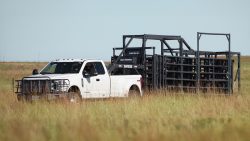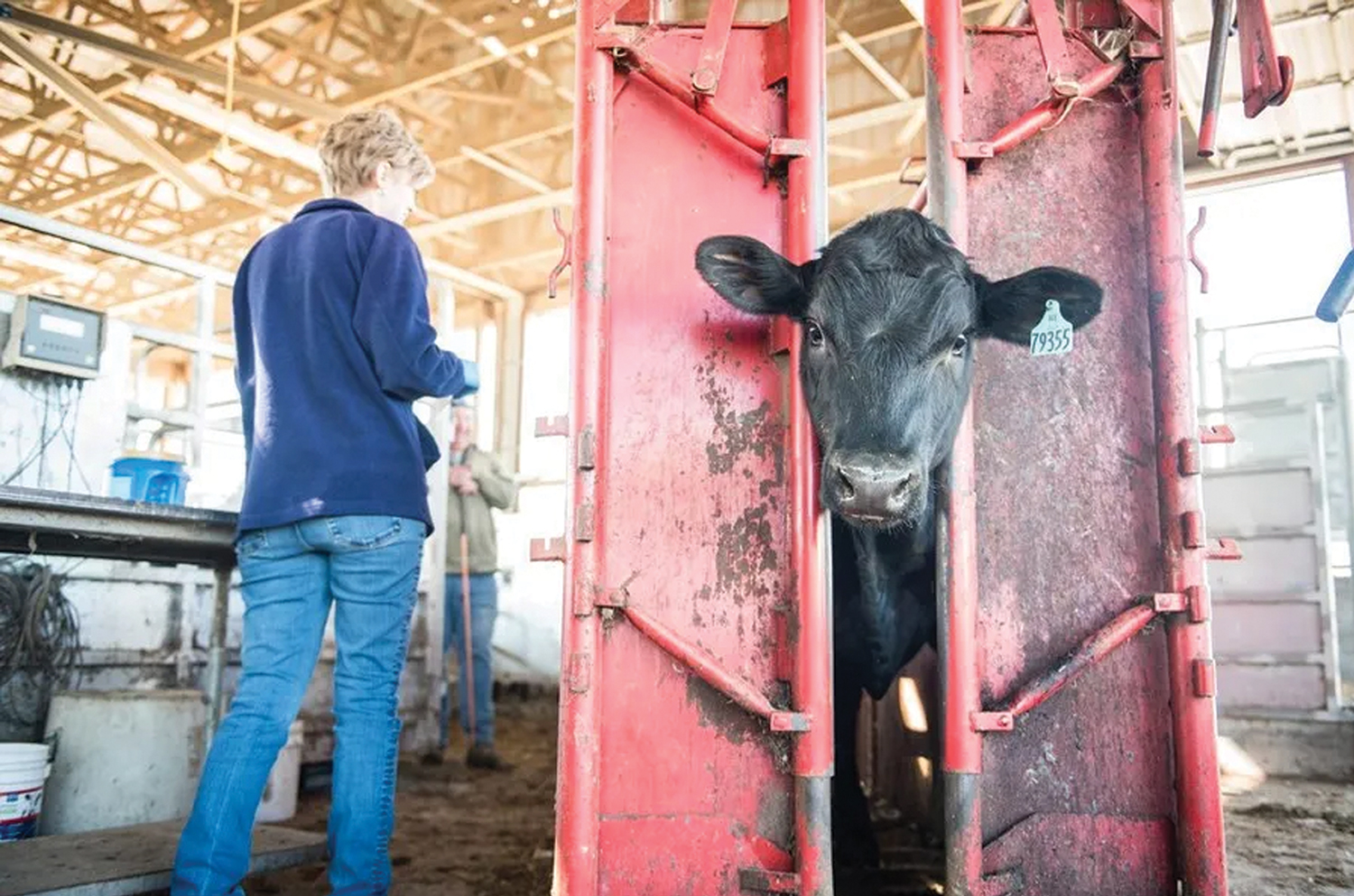User-Friendly Portable Corrals
By Maura Keller
Today’s user-friendly designs offer the simplicity, efficiency, and safety that is paramount when handling both small and large herds of cattle.
Rawhide Portable Corral began in 2002 and were the first portable corral on wheels to implement a flexible pinning system and hydraulics to do the lifting. Over time, John McDonald, the inventor, has continued to improve upon the company’s early design to allow for more capacity, versatility, and ease of operation with new and patented additions.
According to Heather Dallas, sales and marketing specialist at Rawhide Portable Corral, a user-friendly corral should allow for the producer to operate it on their own, without risk of injury, as well as allow them to improve their operation with an increase in profitability.
“Over the last 22 years, we have used our corrals ourselves and listened to our customers. With ingenuity and innovation, we have added new designs, increased capacity, access gates, a loading chute, torsion axle suspension, and other modifications to make our corrals more user friendly,” Dallas says. Customers can choose from three different styles of corral at Rawhide to meet their needs, all of which come in a variety of sizes with different options.
Rawhide has recently unveiled the new patented torsion axle suspension system, which will now come standard on their corrals, as well as the addition of brakes.
“We wanted to ensure the safety of our customers pulling our corrals down the road at highway speeds, as well as protect the corral and tow vehicle as it is being pulled through pastures and over rough terrain,” Dallas says.
“Portable corrals have evolved with the industry, becoming a way for ranchers to access cattle more frequently with less hassle and have grown in popularity over the last few years for ranchers who are able to lease more ground for grazing,” says Ethan Cantrell, dealer relations manager at MJE Livestock Equipment.
Specifically, Cantrell points out that today’s corrals are now much more tailor-made to fit ranchers specific and changing needs in the way of safety and efficiency as well as size and functionality.
“For example, the Conquistador comes in a variety of sizes, there is one fit for every rancher. We even have a few models that have expansion packs so if you use it for a year or two and your increase your herd size, you can add a few panels and gates to drastically increase the space you have to work cattle,” Cantrell says. “This allows the rancher to speed up productivity and efficiency in their operation thus increasing profits.”
When designing their wheel corral models, MJE Livestock Equipment has taken the time to not only talk to end users of the product, but they have gone as far as putting the product in their hands and letting them test it in real-life scenarios and provide feedback and suggestions.
“Everything about our wheel corral is built to make life easier for the cattle handlers. Our 12-ft drive-through gates make it easier for a feed pickup to fit through,” Cantrell says. “Our dual-sided hydraulic adjustable alley and standard bud box have all been designed with our customers in mind. These features are all things that customers have asked for, and ultimately grown to love about our wheel corrals.”
According to Steve Langrell, research and development manager at Arrowquip, today’s portable corrals feature more options for pen configurations, bigger size corrals, loading options into pots, adjustable alleys, headgate options on the front, and basic functions for working animals on the front, in very basic chute functions.
“What this means to me is the ease of setup as this is important. It is one of the basic reasons these came into the market as people got tired of hauling bundles of panels to the pasture and unloading and setting up,” Langrell says. Then you have to do whatever you need to with your cattle and when you are all done and usually tired, you now have to start packing up the corral and so if it’s a really big job you start to dread it.”
Arrowquip produces the Heeler, which keeps optimal cattle flow at the forefront of the portable corral design. Simple, yet reliable, the Heeler features an exclusive 18’ double alley that quickly converts to a single alley and cattle-free zone with a locking swing gate, and four spring-loaded man gates on the outer panels for strategic access to the two pens with approximately 2,620 square feet of space.
Langrell says that one of the big reasons portable corrals have become so important to the industry is that the country is getting more and more broken up with smaller tracts of land and now a lot of farmers will be leasing smaller pieces of pasture.
“For one, they don’t own the land, so are hesitant to spend too much money on infrastructure. Also if you have multiple pastures, if you have permanent infrastructure on each piece that could result in a lot of money, this way you have one capital investment and it also has resale value should something happen to you or you just want to get out of cattle or retire,” Langrell says. “Over the years they have added more options so what might have just been a gathering corral they now have options to load into pots and also the ability to catch your cattle at the front of the alley and perform more procedures on them, such as vaccinating your cattle.”
Moly Manufacturing has been focused on the development and evolution of portable corrals for almost forty years. In fact, Jon Mollhagen created the first portable hydraulic corral in 1987 – the Trans-Corral – which was Moly’s very first product.
As Lacey Mollhagen, vice president of Moly Manufacturing explains, back then, a lot of the equipment wasn’t portable in the sense we think of today, it wasn’t truly road-worthy portable.
“And that’s what sets Moly’s All-Purpose Corral apart from the rest. It’s our patented galvanized steel wheel system, that removes having to deal with flat tires or tires slipping off,” Mollhagen says. “The wheels on the All-Purpose Corral allow for sideways motion, so the panels (or moving walls) can slide, the wheels can also be lowered to accommodate smaller species which makes it a very versatile piece of equipment.”
For the All-Purpose Corral it’s all about size – it’s still the same square footage, but with the All-Purpose Corral, producers can still get through a ten-foot gate. The collapsible nature and the flexibility of the All-Purpose Corral allow it to be able to be used in large and small spaces.
“Also, the All-Purpose Corral can attach to your bale bed, adding convenience by using your own equipment and not having to purchase additional equipment to haul/setup the corral,” Mollhagen says. “The All-Purpose Corral also provides customers with flexibility because we have 10-foot panel as opposed to the 18- or 20-foot panels you see on other models today. It’s the convenience factor for the producer for sure.”
As Moly Manufacturing works animals they’re constantly adjusting the size of the pens to keep humans out of the pens. With the All-Purpose Corral, you can adjust the walls to create a safer environment for the animal as well as the human operator while working livestock.
“Additionally, as producers are moving walls, we also have patented kickstand stabilizers that are an additional safety feature that does not allow for kickback into the operator,” Mollhagen says.
What To Look For
For farmers and ranchers looking for user-friendly portable corrals, Dallas suggests they should focus on corrals that are both durable and versatile. Producers should also be asking important questions regarding the quality of steel and component parts. Dallas suggests asking around and seeing how well other producers’ corrals have held up over the years.
She suggests asking questions such as: How can this corral work in different aspects for your operation? Can you do more than just catch your cattle with it? Can you process your animals on site if needed? How easy will it be to haul this corral from pasture to pasture, or through the pastures with rough terrain? Do you want to push panels on steel wheels or solid rubber wheels? Do you want to hand crank winches and cables? Do you want to use ratchet straps to secure your corral to be able haul it to its next location?
“Last, but not least, they should be looking into customer service,” Dallas says.
Indeed, when looking to purchase a wheel corral there are many options and features to consider. Cantrell says the first and foremost thing to consider is safety, that includes both human safety, and the safety of the livestock that are going to be in the working pens and alley.
“We take pride in the structural integrity that our wheel corral offers and the options and features that we have incorporated to increase safety when using our wheel corrals, making working cattle truly a family-friendly task,” Cantrell says.
The other major thing to consider is the efficiency of the wheel corral as a whole. Ultimately ranchers want their cattle in the working pens for as little time as possible. As Cantrell explains, the less time they are in the working pens the quicker they can get back to pasture or feed, and therefore lowering stress and increasing productivity per head. This is why all MJE Livestock Equipment’s wheel corrals come standard with a bud box to load the alley, and a dual sided adjustable alley in order to keep any size of cattle in a single file line and flowing efficiently.
Mollhagen suggests producers focus on the size, flexibility, quality, portability, additional features like the headgate, safety features like the bottom panels are four inches off the ground so small animals will not get their heads stuck, also multi-species – being able to use the portable corral products for more than one purpose.
“Build quality is key as the portable corral units are towed down the road and often over very rough terrain so they can take a beating,” Langrell says. In addition, the panels in these corrals typically are fairly long (18feet +/-) so they need to be strong enough to hold wild cattle, yet not too heavy as these panels need to be rolled up so there is a balance.”
Another big part of the portable corral selection process focuses on the hinging system on portable corral panels as they fold out. Langrell says producers must consider rolling terrain so the panels need to be able to flex, but if the hinge allows too much flex by the time you get to the last panel it can have a real lean on it.
“This only makes it tougher to roll out. There are some very big corrals out there now, but you need to realize that with this comes more effort in setting them up,” Langrell says. “I had one very experienced producer say to me once with these large corrals it takes a football team to set them up.” Some corrals have cable assist to make it easier to setup. Some have the option to carry some extra panels. This way a producer has the easier set up but still can add a little bit to one pen or so on.
Langrell says that when selecting a portable corral do research on the cattle flow in these units.
“As these are portable units, you have to sacrifice some things,” he says. “You may not necessarily have the ideal set up like you would of you were making a purpose-built system.”





